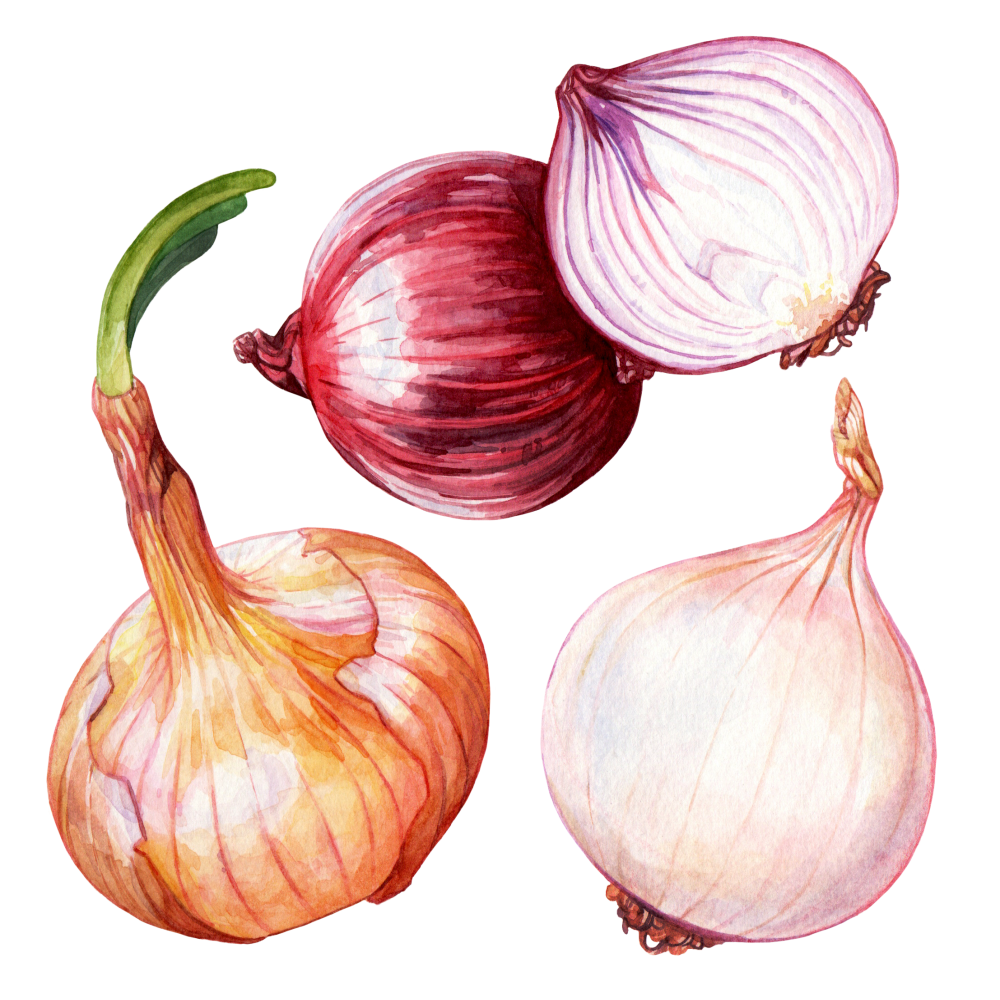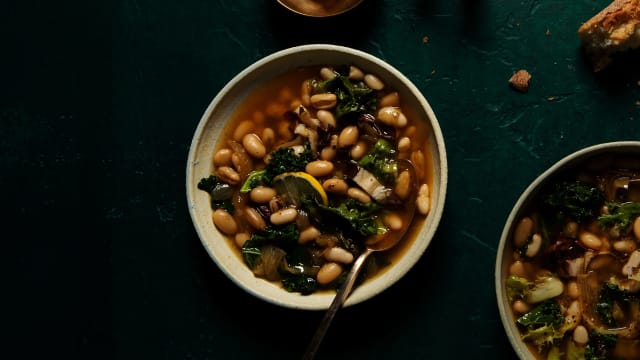Onion

Latin name: Allium cepa (plus dozens of wild species worldwide)
Other names: bulb onion, common onion
Uses: vegetable, aromatic
What are onions?
Onions are a member of the allium family, along with garlic, leeks, and shallots. This might sound like a bold statement, but you can’t cook without onions. Onions make savory dishes savory. Like their kin garlic, leeks, and shallots, onions impart both pungency and sweetness to everything they touch; they’re culinary chameleons depending on how you prepare them. Unless you live in a Buddhist temple (where alliums are eschewed), there should always be an onion in your pantry.
Why are onions healthy?
Onions are high in vitamins B6 and C, fiber, manganese, and biotin. Onions have shown the potential to lower blood pressure and reduce the risk of heart attacks. Additionally, various antioxidants in onions — particularly the flavonoid quercetin — may have anti-cancer properties.
What do onions taste like?
The trademark onion aroma comes from a combination of sulfur and nitrogenous compounds, but there’s a lot of variability in sweetness and pungency depending on the variety. Vidalia, Maui, and Walla Walla onions are famously sweet regional varieties great for eating raw; white onions have a similar juicy texture and slight sweetness.
Pearl and cipollini onions are also sweet, but their firmer, tighter texture and small size makes them better for braises and stews. Red onions are also sweet but a little sharper, making them perfect for pickling (and their color intensifies to a bright fuchsia in vinegar). Yellow onions tend to be the most pungent, though slow cooking still brings out their natural sugars.
How do I use onions?
When it comes to savory foods, onions are the little black dress of ingredients — they go with everything. Along with carrots and celery, they’re one-third of the mirepoix that’s the aromatic basis of every stock and broth (and onions are gorgeous with every herb in a bouquet garni). Sub out the carrots for bell peppers and they’re one-third of the Holy Trinity in Cajun and Creole cooking. Onions are also a primary ingredient of sofrito; comprised of slowly cooked onions, garlic, tomatoes, and peppers in oil, sofrito is the basis of numerous Spanish, Italian, Portuguese, and Latin American dishes (in the Philippines this is called ginisá).
Onions also have a place in every soup and stew, but they’re especially showcased in French onion soup, where they’re caramelized and simmered in a rich brown stock until tender and then topped with a thick piece of toasted baguette and melted Gruyère. Likewise, any savory pie benefits from onions. Swabian onion cake is a traditional autumn food in Germany, typically enjoyed with young wine from the recent harvest but equally delicious with apple cider (onions adore wine and apples).
What do onions pair well with?
Onions love being paired with acidity which is why they’re so good pickled but also why they’re essential in salsas (they also love garlic, chiles, and cilantro). White onions are best with pico de gallo or guacamole, whereas red and sweet onions are better with mango or pineapple salsas. These fruits are already acidic, but hit them with an additional squeeze of lime to really marry the flavors.
Onion dip is so delicious because it lets onions play with the lacto-acidity of sour cream and their other best friend: creaminess. A sauce soubise is basically just a puree of creamed onions, and creamed pearl onions are a classic holiday side dish. Heck, you can make a main course out of onions and cream — try stuffing hollowed-out onions with a filling of spinach, mushrooms, and breadcrumbs (bind the filling with a creamy soubise made from the onion’s interior) and then roast until tender. If you want to skip the dairy, stuff onions with a lemon and herb rice pilaf and sprinkle with pine nuts.
Where do onions grow?
Onions likely originated and were first domesticated in Asia, though it’s not clear exactly where. They’ve been used throughout Asia, the Mediterranean/Middle East, and North Africa for millennia. Today China grows the most onions worldwide, but India and the United States also grow a significant amount of the global crop.
How to buy onions:
If they're fresh green onions, look for bright, unwilted greens (and use them like scallions). Storage onions should be firm, with no mushy spots, and no signs of sprouting. Keep them somewhere dark and cool.
Surprising onion fact:
Old folk medicine says that putting a cut raw onion in your socks while you sleep will fend off colds and flu; this dates back to the days of the bubonic plague, when the common medical belief was that “noxious air” was the cause of the disease (long before we figured out it was caused by bacteria and transmitted by rat fleas).




